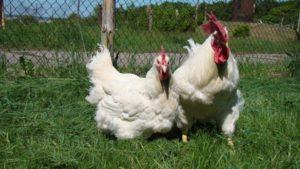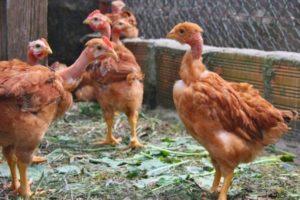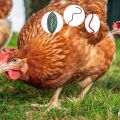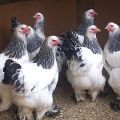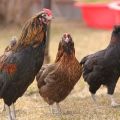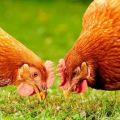Description and characteristics of the Tsarskoye Selo breed of chickens, maintenance rules
Short summers and long cold winters in most regions of Russia, especially in Siberia, impeded the breeding of productive poultry. The Tsarskoye Selo chicken breed has no problems with adaptation in harsh climatic conditions. It is hardy, unpretentious, versatile: it gains good weight within 1-2 years, has good egg production.
Content
- 1 Origin of the breed line
- 2 Description and characteristics of the Tsarskoye Selo breed of chickens
- 3 Main advantages and disadvantages
- 4 Breed varieties
- 5 Features of maintenance and care
- 6 How to feed Tsarskoye Selo chickens?
- 7 Breeding subtleties
- 8 Possible diseases
- 9 Where can you buy eggs and poultry?
Origin of the breed line
The breed was developed by Russian scientists at the end of the 20th century. When obtaining a stable genotype, broilers-6, New Hampshire and Poltava clay breed were used as progenitors. The purpose of the selection is to obtain highly productive poultry for breeding in households.
Description and characteristics of the Tsarskoye Selo breed of chickens
Tsarskoye Selo chickens are of the meat and egg type. The bird is unpretentious in keeping, resistant to diseases, tolerates low temperatures well.
Exterior and color
Tsarskoye Selo chickens have elegant and magnificent plumage. The colorful red and black outfit gives the poultry a decorative look. A reddish tint prevails on the wings, trunk, neck. Black feathers with stripes and splashes are found in the tail. Males are brighter and more expressive than females.
An adult bird reaches large sizes. The average weight of males is 3200 grams, chickens are 2800 grams. Paws are high, naked, light yellow in color. The beak is of the same shade. The scallop, earrings and lobes are small (especially in chickens), deep red. The head is neat, on a long neck.
Productive qualities
The carcass weight of a one-year-old bird is sufficient to be used for meat. At this age, males go to slaughter. The chickens are left for another year to get eggs. Upon reaching 2 years of age, the flock is renewed, as the productivity of layers decreases.
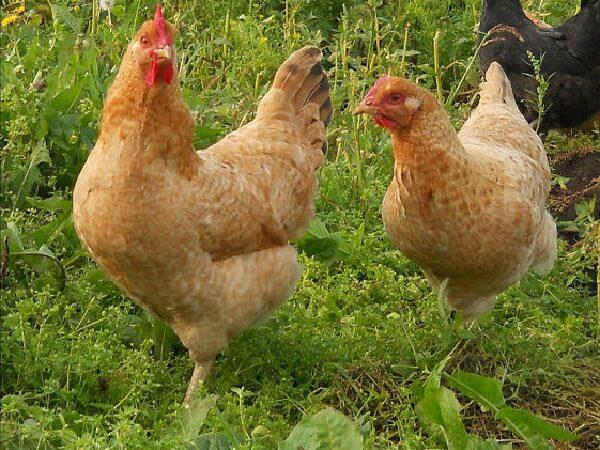
Puberty and egg production
Young layers begin laying at 5-6 months of age. The final ripening of hens occurs towards the end of the year. More than 170 eggs can be obtained from one adult chicken per year, depending on the care. Eggs, even in young chickens, are large - up to 60 grams, brown.
Temperament of chickens
Tsarskoye Selo chickens are mobile and curious. Roosters are aggressive towards the "enemies" of the chicken family: cats, dogs, wild birds.There can be quarrels and fights within the herd, especially if the roosters do not have enough female hens.
Main advantages and disadvantages
The bird is not afraid of low temperatures, maintaining activity and productivity. During incubation, the rate of egg fertilization is 100%. Chick survival rate is about 98%. The Tsarskoye Selo chicken retained the incubation instinct and does not abandon the nest if it sat on eggs. The disadvantage of the breed is the short productive period: up to 2 years for meat and eggs.

Breed varieties
In the Tsarskoye Selo breed, there are chickens with a pink-shaped and leaf-shaped comb. The first variety is more hardened, surpasses the second in weight. Leafy chickens are more thermophilic and lay more eggs.
Features of maintenance and care
The Tsarskoye Selo breed was developed for the northern regions. But she feels great in warmer climates. When keeping it, it must be borne in mind that the bird is mobile and curious.
Poultry house
It is not necessary for an adult bird to maintain a high temperature in the house. Chickens are active, their health and appetite are not affected by a temperature close to zero degrees. The Tsarskoye Selo breed does not need perches for a night's sleep. Floor keeping is safer for birds with a weight of about 3 kilograms and significant dimensions. The area of the premises is determined by the number of livestock. One bird must have at least 0.5 square meter. For hens, nests are important (at the rate of 1 nest for 5 chickens), installed in quiet, shaded places at a height of 50 to 70 centimeters.

The bird needs good lighting: a combination of natural and artificial. For convenience, a timer is installed that automatically turns on and off lighting devices. It is recommended to leave a low-power lamp constantly on at night so that the bird does not worry.
Place for walking
The Tsarskoye Selo breed of chickens needs a place to walk. The bird loves to walk and is not afraid of colds. The approximate area for walking is 1.5 square meters per head. To organize walking, an aviary is installed next to the poultry house. In rural areas, chickens have more room to walk outside the garden.
Feeders and drinkers
Care should be taken to ensure that birds do not consume contaminated feed and water. The water is changed 2 times a day. Drinks should be free of chlorine. The drinking bowl is rinsed every time so that mold does not form on the walls. The water temperature is 15-17 degrees.
The feeders are installed at a height of 10-15 centimeters above the deck. The design of the feeders should not give the bird the opportunity to get up in them with its paws, be convenient for removing feed residues. Permanent feeders are installed for the grain mixture.
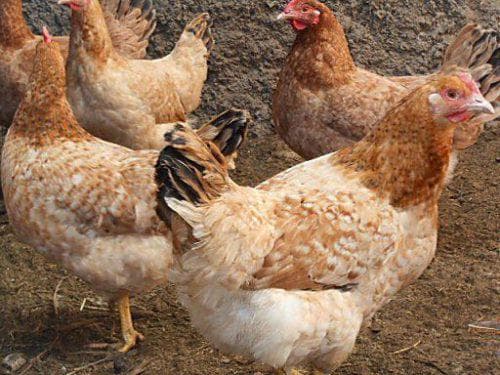
Vegetables and greens are given in a special container that is well washed and disinfected. Sand and crushed shell rock are poured into containers convenient for birds and stored in a poultry house in a permanent place.
Molting and break of egg production
During molting, poultry stop laying and are susceptible to disease. Tsarskoye Selo chickens remain active during this period. Their molting period can last up to 2 months. A delayed molt indicates a lack of vitamin D in the chicken diet.
How to feed Tsarskoye Selo chickens?
The diet of chickens should not differ significantly at different times of the year. Vitamins, mineral supplements must be present at all times. The basis of food is crushed grain of wheat and corn. Oats, rye and barley should be no more than 10% of the dry feed. The cereal mixture is prepared in the form of a wet mash. Crushed grain is poured into a container in accordance with the proportion and a little water is added. The mash should not be dry or sticky to your hands.
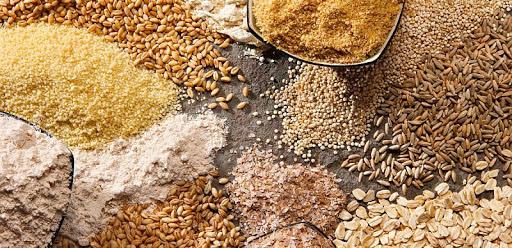
The addition to the main diet should be:
- peas, beans (boiled, crushed);
- vegetables (boiled, mashed);
- fruits (raw, cut);
- greens (fresh, dried);
- vegetable oil;
- bone flour;
- a piece of chalk.
In the presence of compound feed for chickens, the diet is adjusted depending on its composition.
Seasonal diet
In the spring-summer period, fresh grass is added daily to bird feed:
- dandelion;
- swan;
- clover;
- wood lice.
The herb is given whole or cut. After 30 minutes, uneaten remains are removed.
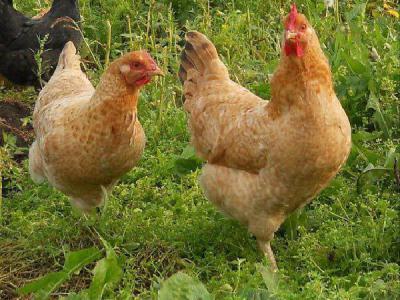
Chopped tops of carrots and beets are added to the mash. Root crops (carrots, beets) are boiled and cut. Zucchini, pumpkin, apples, pears are given fresh. In the autumn-winter period, a mash is prepared from boiled vegetables, adding flour from dried herbs to it. Potatoes are boiled and pounded. They are given without mixing with other vegetables.
Daily ration
Feeding chickens is divided into 3 doses, with an interval of 6 hours. In the morning and in the evening, give a grain mixture, greens. For lunch, the bulk of the feed is vegetables. Grain or compound feed makes up about 20% of the volume. The amount of feed per bird is on average 80 grams per day.
Based on the number of livestock, feed is calculated and prepared for 1 feeding. The hens should be full within 10 minutes. Uneaten remains from the feeders are removed. There should always be fresh water, shell rock and sand in the house.
Breeding subtleties
For active birds, it is necessary to provide a place for constant walking and a spacious chicken coop.

Possible diseases
The Tsarskoye Selo breed of chickens is resistant to infections and colds. The cause of death may be parasites carried by mice, rats, sparrows, crows. Vaccination of chickens and balanced nutrition of the young will increase the immunity of adult birds.
Cold
Colds can be caused by drafts in the chicken coop and cold floor. If the bird has become lethargic, has stopped laying eggs, walks with an open beak, then it is necessary to plant it in a dry, insulated room and replace the water with vitamin broths. In severe cases, antibiotics are used.
Coccidiosis
Infection with coccidia most often occurs during walking, when the bird pecks on earthworms and greens along with the ground. Infection symptoms:
- blue discoloration of earrings and scallop;
- loose and frequent stools;
- lethargy;
- the bird freezes, which is why it constantly cackles;
- loss of appetite;
- thirst.
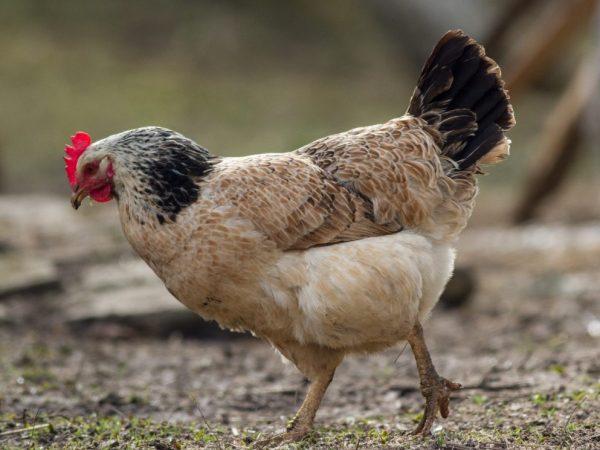
A sick bird is placed in a cage. Treatment is with antibacterial drugs. Prevention - vaccination of chickens, daily cleaning in the house. In case of signs of coccidiosis - disinfection of the premises and equipment.
Pasteurellosis
Healthy chickens can become infected by ticks by pecking at the feces of sick wild birds. The period from infection to the first symptoms does not exceed 2 days. The disease can be acute or chronic. Signs of acute bacterial contamination:
- thirst;
- loss of appetite;
- temperature up to 44 degrees;
- cyanosis of scallops;
- mucous foam from the nose;
- blood in the stool;
- apathy.
It is impossible to cure a bird infected with pasteurellosis. Sick chickens must be slaughtered, carcasses must be disposed of. The high survival rate of pathogens requires careful and repeated disinfection of the premises and equipment. Prevention - vaccination of chickens starting from 6 months.
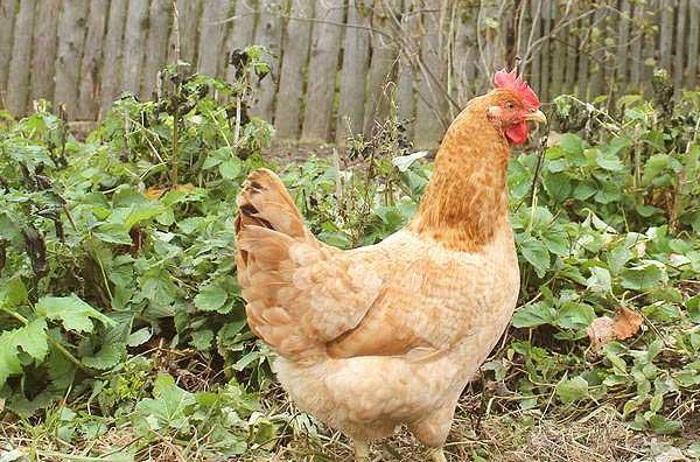
Worms
Ascariasis is a helminthic infestation that affects laying hens and parent flocks. Infection occurs through wild birds or from purchased chickens. Signs of infection - decreased egg production, loss of appetite, thirst. Treatment is carried out for a long time with drugs containing fenbendazole.
Puff lice, lice, ticks
The source of infection for chickens is wild bird. Insects bring great concern to the bird, because of which it loses part of its plumage, loses weight, stops laying eggs, becomes vulnerable to infections and other parasites. Timely chemical treatment of chickens and disinfection of the poultry house give a good result in the fight against malofagosis.
Where can you buy eggs and poultry?
You can buy eggs and chickens at the VNIIGZH St. Petersburg or from private breeders.
